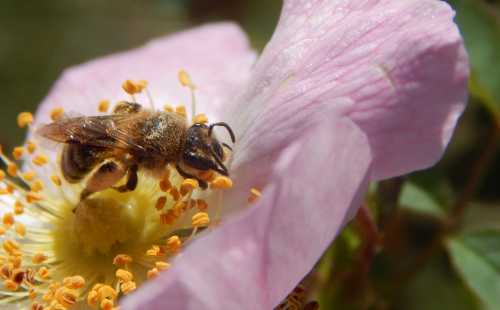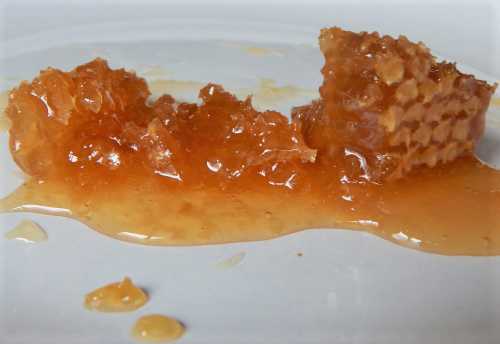Is It Bees, Bee’s Or
Bees’ ?
Updated: 27th April 2021
Depending on whether we write bees, bee’s or bees’, the meaning of a sentence can be changed. As a result, if used incorrectly, the reader could be misled, or worse, the sentence won’t technically make grammatical sense at all – even if the reader can guess what is actually meant
So how do we know when to use bees, bee’s or bees’? Here is an explanation of when the apostrophe should be used, and its correct placement.
Now I know my website may be littered with typos and errors of various kinds, and working through every page is going to take me a long time, however, I do recall my grammar lesson from school about the correct placement for an apostrophe, so here I will share what I learned.
When To Use Bees, Bee’s or Bees’
1. Plural (more than one) or single (one bee)?
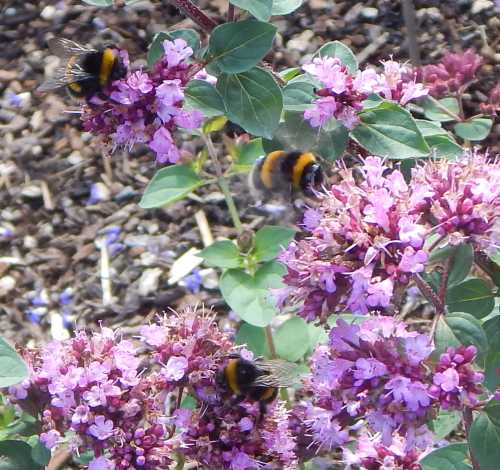 Bumble bees foraging on oregano.
Bumble bees foraging on oregano.Pictured above, there are three bumble bees foraging on an oregano plant.
Without an apostrophe, bees is simply the plural of the word bee. If
there is more than one bee, then the word bees is the correct one to
use.
Thus: one bee = bee; more than
one bee = bees.
Here is another example:
There were several bees foraging on my oregano plant, but there was only one bee visiting my roses.
In the above sentence, there is no need for an apostrophe in either case where bees and bee are written. However, for possession, an apostrophe would need to be added.
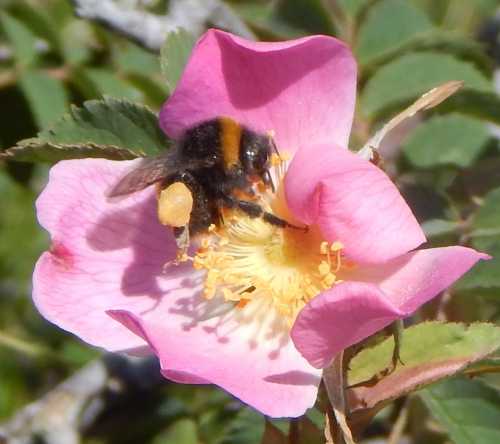 Bumble bee on rose
Bumble bee on rose2. Apostrophe for possession
Bee's
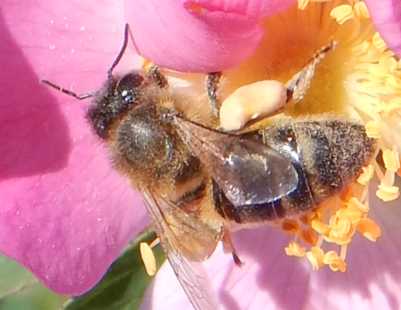 The honey bee’s pollen baskets were loaded with pollen.
The honey bee’s pollen baskets were loaded with pollen.An apostrophe before the s should be used for the singular possessive – that is to say that it is used when referring to something that belongs to one bee.
For example, this sentence tells us that we are referring to the pollen baskets of only one honey bee:
The honey bee’s pollen baskets were loaded with pollen.
Bees'
An apostrophe after the s should be used for the plural possessive, or in other words, it is used when referring to
something that belongs to more than one bee.
Thus:
The honey bees' pollen baskets were loaded with pollen.
The sentence above informs us that there was more than one honey bee with pollen baskets loaded with pollen.
There are times when, because of the context, it can be argued that it’s quite obvious to the reader when the sentence is about one bee or several bees, but this may not always be the case.
This is why, aside from the fact that it’s great to demonstrate a competent use of English grammar (most people, including myself fail miserably in this all to often), it’s a good idea to place the apostrophe accurately.
Here is a further example
a. the bee's knees, and
b. the bees' knees.
Each phrase above is referring to a different number of bees because of the position of the apostrophe.
Bee’s knees tells the reader that the phrase concerns the knees of just one bee. It also tells us that the writer is referring to at least more than one of its knees from a possible six, although we don’t know exactly how many of the bee’s knees are being written about.
Bees’ knees
tells us that the writer is referring to the knees of more than one bee.
So, to recap on
the position of an apostrophe for possession:
- something belonging to just one bee is the bee’s, but
- if something belongs to more than one bee, then it is the bees’.
3. Abbreviation
If you are shortening bee is then it becomes bee’s.
Personally, I don’t usually abbreviate bee is in writing, unless I am expressing speech.
Here's an example:
Jane and Dan were sitting in the garden, when they saw a mason bee entering one of the holes in their bee house.
Jane said to Dan, “How wonderful! That mason bee’s making a nest in our bee house!”
 "That mason bee’s making a nest in our bee house!”
"That mason bee’s making a nest in our bee house!”
Bees, bee’s and bees’
Now let’s see if we can use bees, bee’s and bees’ differently, but within the same context:
Yesterday, David
and Amanda were walking home when David saw a bumble bee lying on the ground
close to a bees’ nest.
David said to Amanda,
“That bee’s not moving. I hope it’s
okay.”
Amanda looked closely at the bee and said, “The bee’s wings are damaged, so it
can’t fly.”
If you found this page helpful or interesting, I'd really be grateful if you would share it with others - if not this page, perhaps another, such as Gardening For Bees.
Thank you so much :) .
